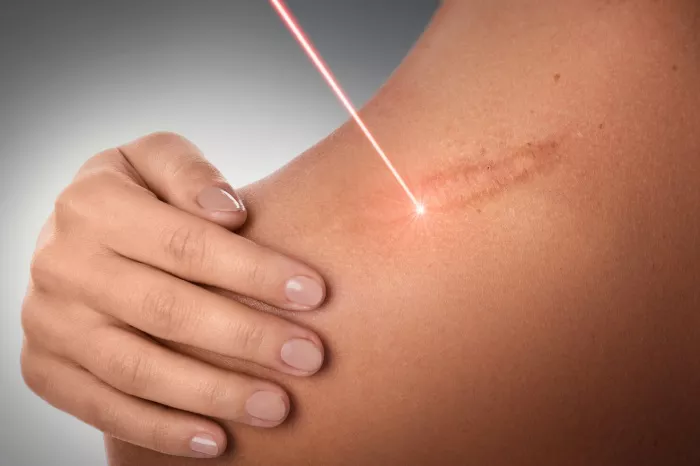Scars, whether from surgeries, injuries, or skin conditions, can be a source of concern for many individuals. In the pursuit of scar management, one popular solution is the use of scar creams. This comprehensive guide aims to demystify the workings of scar cream, exploring its mechanisms, ingredients, and factors influencing its effectiveness.
Understanding the Formation of Scars
Before delving into the intricacies of how scar creams work, it’s crucial to understand the process of scar formation. Scars result from the body’s natural response to injury or trauma. When the skin is damaged, the body initiates a complex healing process, involving the production of collagen fibers to repair the affected area. The characteristics of the resulting scar depend on factors such as the depth and type of wound, as well as individual healing mechanisms.
The Role of Scar Creams
Scar creams are formulated to address multiple aspects of scar formation and appearance. These formulations often aim to:
Moisturize the Skin: Proper hydration is a key aspect of scar management. Scar creams typically contain moisturizing agents that help maintain skin hydration, promoting a more favorable environment for healing.
Modulate Collagen Production: Collagen, the primary structural protein in the skin, plays a crucial role in scar formation. Scar creams may include ingredients that modulate collagen production, promoting a more organized and less visible scar tissue.
Reduce Inflammation: Inflammation is a natural response to injury, but excessive inflammation can contribute to scar visibility. Scar creams may contain anti-inflammatory ingredients to help minimize redness and swelling.
Improve Skin Elasticity: Scar tissue often lacks the flexibility of normal skin. Scar creams may include ingredients that improve skin elasticity, contributing to a more natural texture.
Address Pigmentation Changes: Changes in pigmentation, such as hyperpigmentation or hypopigmentation, are common in scars. Scar creams may incorporate ingredients that help regulate pigmentation, leading to a more even skin tone.
Understanding the multifaceted nature of scar formation allows us to appreciate the targeted approach that scar creams take in managing these various aspects.
Common Ingredients in Scar Creams
The effectiveness of scar creams hinges on their ingredients. While formulations can vary, several common ingredients are frequently found in scar creams. These include:
Silicone: A hallmark in scar management, silicone is believed to hydrate the skin, modulate collagen production, and create a protective barrier. Silicone-based scar creams are often recommended for their potential efficacy.
Onion Extract (Allium Cepa): Known for its anti-inflammatory properties, onion extract is thought to reduce inflammation, redness, and improve the overall appearance of scars.
Vitamin E: Recognized for its antioxidant properties, vitamin E is believed to support skin healing and may contribute to reducing the visibility of scars. However, the efficacy of topical vitamin E is a subject of ongoing research.
Allantoin: With soothing and moisturizing properties, allantoin contributes to skin hydration and may assist in improving the texture of scars.
Glycerin: As a humectant, glycerin attracts and retains moisture in the skin, promoting hydration and overall skin health.
The combination of these ingredients forms the building blocks of scar creams, each contributing to specific aspects of scar management.
Mechanisms of Action
The mechanisms by which scar creams work involve complex interactions with the skin at the molecular level. While the specifics can vary based on the formulation, the general mechanisms of action include:
Enhancing Moisture Retention: Scar creams with moisturizing agents, such as silicone and glycerin, enhance the skin’s ability to retain moisture. This is crucial for creating an optimal environment for scar healing.
Promoting Collagen Remodeling: Certain ingredients in scar creams aim to modulate collagen production and remodeling. By influencing the arrangement of collagen fibers, scar creams contribute to the reduction of scar thickness and visibility.
Reducing Inflammation: Scar creams containing anti-inflammatory agents work to minimize inflammation associated with the healing process. This can help alleviate redness and swelling, contributing to a less conspicuous scar.
Regulating Pigmentation: Scar creams with ingredients targeting pigmentation changes aim to normalize the coloration of the scar tissue, creating a more aesthetically pleasing appearance.
Improving Skin Texture: Ingredients like allantoin contribute to improving skin texture by promoting cell turnover and overall skin health. This can result in a smoother and more natural-looking scar.
The synergy of these mechanisms reflects the holistic approach that scar creams take in addressing the various facets of scar formation.
Factors Influencing Scar Cream Effectiveness
While scar creams are designed to be effective, their success can be influenced by various factors. These include:
Time Since Injury: The age of the scar can impact the effectiveness of scar creams. Fresh scars may respond more readily to treatment, while older scars may require prolonged and consistent application.
Consistency of Use: Regular and consistent use of scar creams is crucial for optimal results. Irregular application may hinder the efficacy of the product.
Type of Scar: Different types of scars, such as hypertrophic or keloid scars, may respond differently to scar creams. Understanding the specific characteristics of the scar is essential for tailoring the approach to scar management.
Individual Skin Characteristics: Skin type, sensitivity, and individual responses to ingredients can influence the effectiveness of scar creams. Conducting patch tests and monitoring skin reactions is advisable.
Sun Protection: UV exposure can impact the visibility of scars. Scar creams work more effectively when complemented by sun protection measures, such as sunscreen application.
By considering these variables, individuals can better navigate the factors influencing scar cream effectiveness and tailor their approach to scar management accordingly.
Professional Consultation
While scar creams are available over the counter and do not typically require a prescription, individuals with concerns about their scars may benefit from professional consultation. Dermatologists and plastic surgeons can provide personalized recommendations based on the specific characteristics of the scar and the individual’s skin type.
Professional interventions, such as laser therapy or corticosteroid injections, may be considered for more advanced scar management. Consulting with experts ensures that individuals receive guidance tailored to their unique circumstances.
Conclusion
In the quest for effective scar management, understanding how scar creams work is empowering. These formulations, with their carefully selected ingredients and mechanisms of action, offer individuals a proactive approach to scar healing. By comprehending the complexities of scar formation and the targeted interventions of scar creams, individuals can make informed decisions in their journey toward minimizing the appearance of scars. The complete guide presented here serves as a roadmap, navigating the science behind scar creams and providing a foundation for individuals seeking optimal outcomes in scar management.
[inline_related_posts title=”You Might Be Interested In” title_align=”left” style=”list” number=”6″ align=”none” ids=”3359,3294,3292″ by=”categories” orderby=”rand” order=”DESC” hide_thumb=”no” thumb_right=”no” views=”no” date=”yes” grid_columns=”2″ post_type=”” tax=””]

































